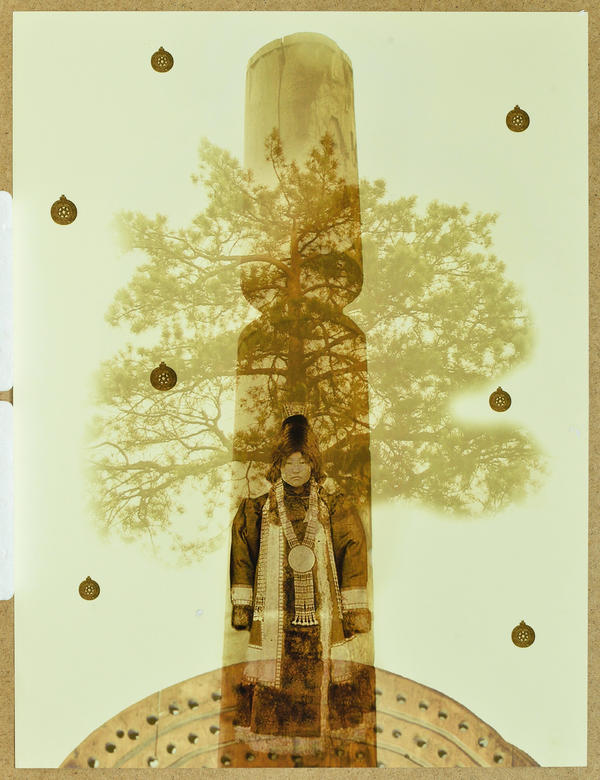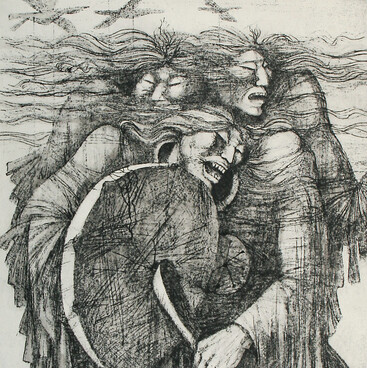The piece Aiyysyt is the result of Sardaana Ivanova’s experiment with computer-generated imagery. She regularly works with new technologies, always combining them with ancient national symbols and motifs.
Sardaana Ivanova grew up in the family of Vladimir Ivanov, a well-known drawing artist and stage designer, an Honored Artist of the Republic of Sakha (Yakutia). Since her childhood, she learned the beauty of lines, the vibrancy of strokes and the resonant spectrum of colours. She graduated from the Yakut Art College and then the Faculty of Graphic Arts of Surikov Art Institute in Moscow.
Ivanova belongs to the generation called the New Creative Wave. This movement started in the 1990s — a time of total freedom of expression. Being fond of national poetry, the artists create ingenious combinations of world art traditions and state-of-the-art technologies. Works of New Wave artists speak the language of conventional idioms, allegories, symbols, and metaphors.
Ivanova works in a variety of art forms: easel graphic art, book illustration, design, batik, and patchwork. In this work housed in the National Fine Arts Museum of the Republic of Sakha (Yakutia), she experiments with computer graphics.
The center of the piece depicts Aiyysyt (Yakut: Айыыhыт), the supreme deity in Yakut mythology. She is believed to be the patron of pregnant women. An important Yakut celebration was devoted to Aiyysyt: the Feast of Kumys.
Ivanova overlaid the image of Aiyysyt with a photograph of the ritual pole called serghe. It is often installed near houses to proclaim that the land has an owner. The object is also a horse hitching pole, as the owners and guests tie horses to it. To the Sakha people, serghe is a symbol of the tree of life.
At the bottom of the piece is the image of the “eternal” Yakut calendar (үйэттэн үйэҕэ диэри барар халандаар). This traditional calendar looks like a smooth flat disk and symbolizes the circle of life on earth. Such calendars were mostly made of wood; they had notches on its surface to indicate important dates.
Thus, the artist has merged the three important symbols of Yakut culture in this piece.
The goddess Aiyysyt, the serghe pole and the “eternal” Yakut calendar epitomize the perpetuation of life and future generations. The artist has mixed concise plastic art and romantic and decorative fantasies, the techniques of primitivism and abstract art. Ivanova is drawn to existential questions; she looks for the answers in experiments, combining the old and the new.



